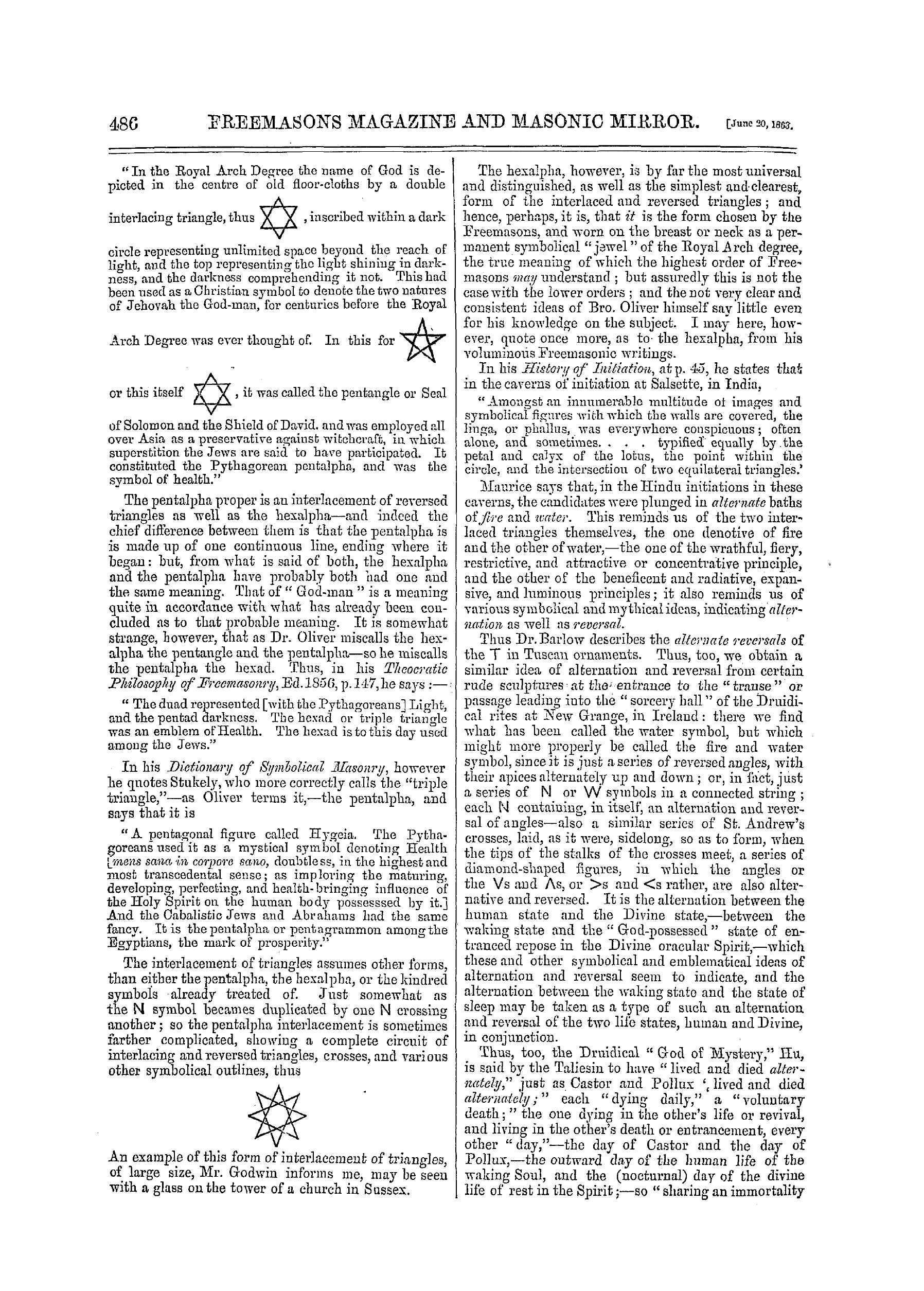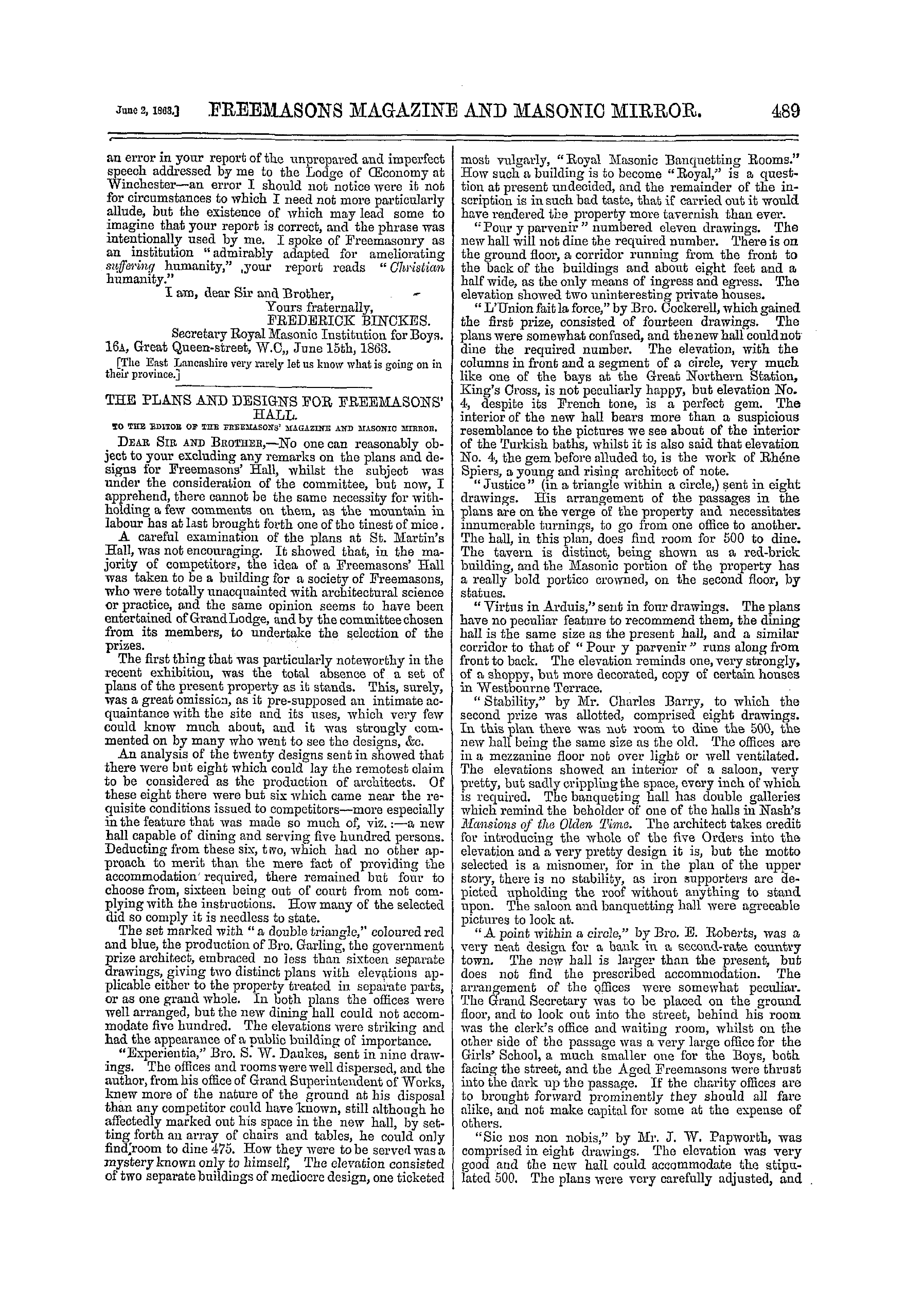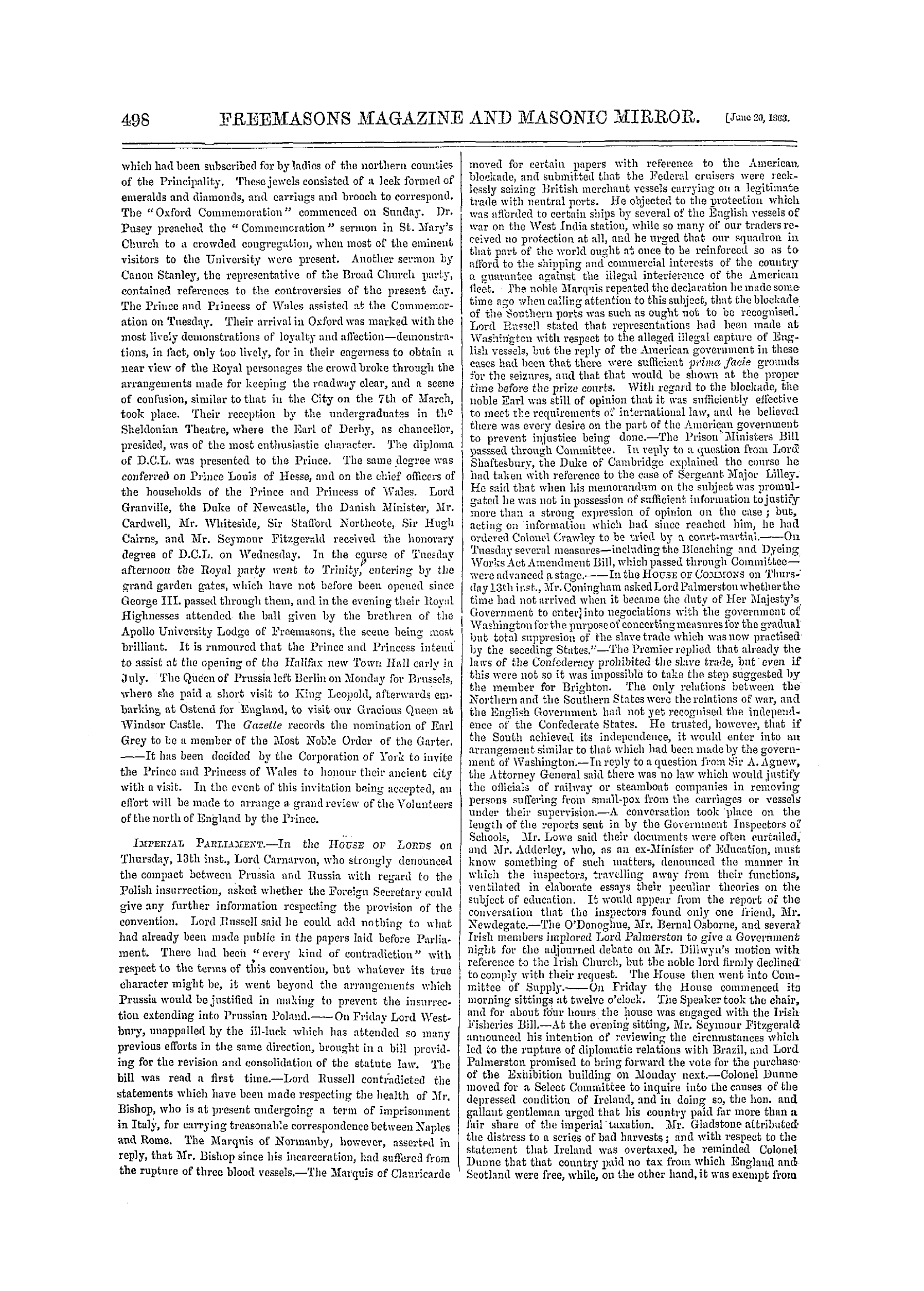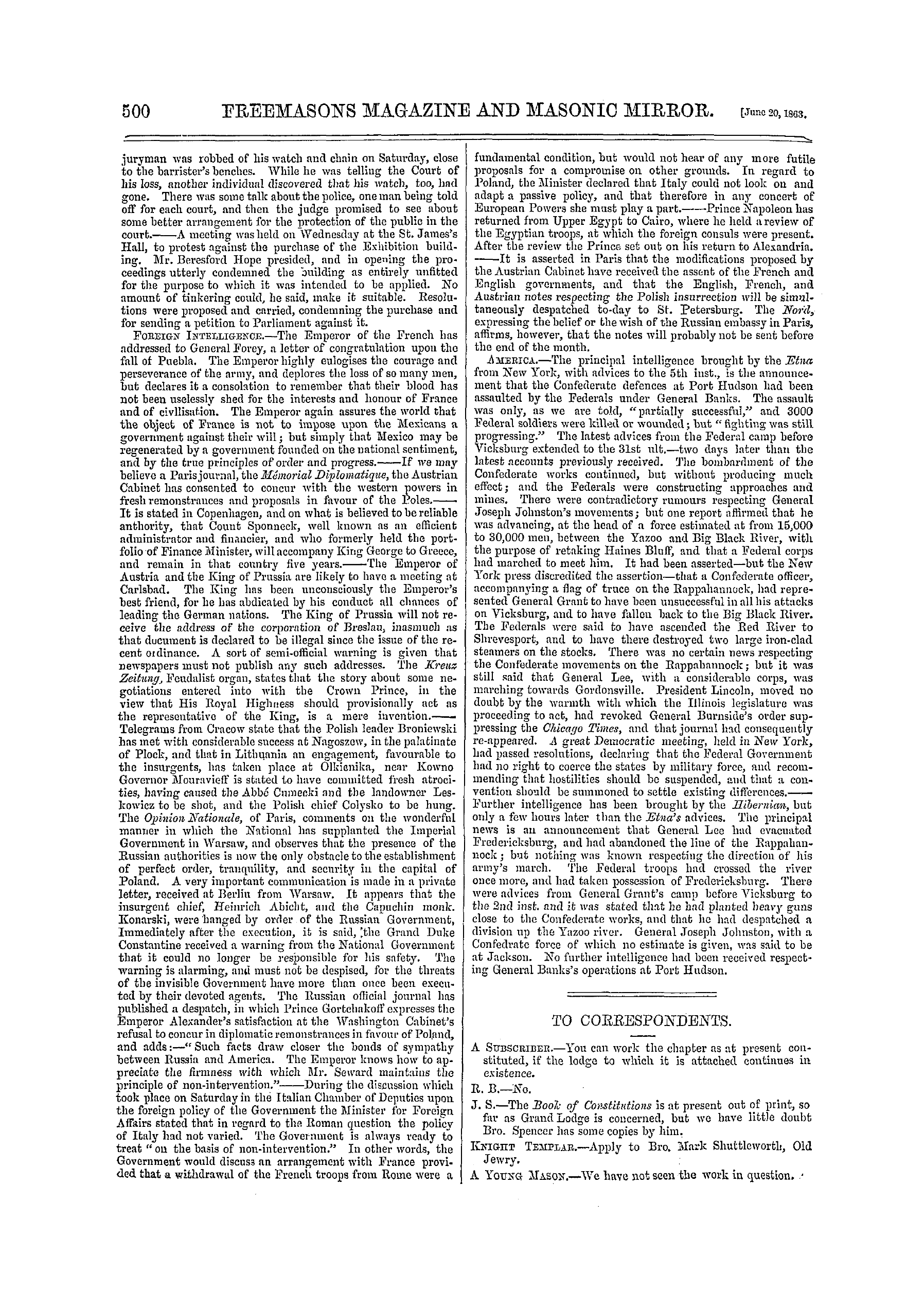-
Articles/Ads
Article GEOMETRICAL AND OTHER SYMBOLS. ← Page 2 of 7 →
Note: This text has been automatically extracted via Optical Character Recognition (OCR) software.
Geometrical And Other Symbols.
the exhaustion of the modifications of the simple or single N only constituting the basis of more complex modifications . Thus a straight line cuts it into its two terminal angles or halves , as if to draw our attention to the quality and reversal of angles ; then a second N takes the place of the dividing strai ght line ; and we have thus the crosscombined with the
ter-, minal angles in various ways ; one of which , the third last in the selection here given , is identical with a sectarian mark of the ancient Jains of Iudia ; and the last in order is a symbol known and regarded as of extremely ancient Chinese aud Indian origin ; and is also still in use from old times , even in this country ,
as a heraldic symbol ; just as , by the way , the Y symbol also is , here and elsewhere , not only among laymen , ' such as the Couyngham family , but as " the pall , " an official vestment of the Roman Catholic archbishops . In all the varieties of the N aymbol there is this
one peculiarity , — . that in each N there are two reversed angles just as there are in the X or St . Andrew ' s Cross ; and indeed in the Greek cross itself ; although this latter may be regarded as showing forth a duality of decussating St . Andrew ' s Crosses , just as we have regarded the last three of the N symbols as displaying a duality of these N symbols . * Here , then in
the N symbol , we have something very like an equivalent for the sexual union of the V and the A or feminine and masculine symbols of the Egyptians , as the true elements of this N symbol , as well as of the cross and the tau ; and by putting the A and the V together thus AV just as we did the reversed taus , of which Dr . Barlow speaks , thus = k we at once perceive that
the N itself may be regarded as a compound symbol , made up of the A and the V , or masculine and feminine symbols , just as the St . Andrew ' s Cross also is . The more elongated forms of the N symbol , however , show this of themselves , and were probably intended , like the dividing lineto do so .
, "With these preliminary remarks , let us now turn again for a little to the letters of Mr . Godwin in his Arcliosolor / ia . In the second of these letters , the author draws attention to a symbolical mark , . which he illustrates by a drawing , from a monument at Westley "Waterless ,
in Cambridgeshire . This mark had been called by others ' a monogram probably of the artist by whom it was executed . " It consists of the N symbol , flanked by a star and crescent , or sun and moon , and surmounted by a cruciform mallet or hammer . In reference to this compound mark , or " monogram , " he gives a quotation from a work on monumental brasses , of which the following is a portion : —
"The occurence of a similar device in two instances seems to show that it was not an individual mark . May it not have been the badge of some guild of Masons ? If
so , it will suggest that the same minds that designed the architectural structures of the middle ages also designed the sepulchral monuments . " The great probability that this mark was not an individual one clearly appears , not only from the second example , which is also given , though it does not include the N symbol ; but alsoand chiefly from the
, fact , shown by Mr . Godwin , that the N symbol itself is one of the most frequent and distinguished of Mason marks ; and which , as he informs me , he has recently in various parts of Canterbury Cathedral , even accompanying and overriding , as it were , many other symbols ; and in one instance curiously distorted and
elongated , and crossing a strai g ht line like a sort of angularised caduceus of Mercury . I may here also note that on the coins of the Ariarathes , a series of Persian kings who lived before Christ , * there is not only the N symbol , but the A , which overrides it : the W , a trinity of angles , which also appears among Mr . Godwin ' s—the Tf—and the hexalpha , which last , in this instance , wants the base lines of the lower triangle , and is thus made to assume
the shape of an oracular tripod or altar , with small circles at the ends of each line , like those on the last of the cruciform N symbols given above from the collection in the Arclueologia . These Ariarathan symbols are associated with the figure of Minerva , on whose hand is the usual diminutive winged " Victory , " as it has been calledreminding one of the Virgin and
, Child , and also of the Hindoo gods and their wives , wives , whom they hold , like small dolls , in their arms . The N symbol also appears on a coin of Amyntas , king of Galatia in the time of Strabo . In volume of engravings printed for the Spalding Club of Scotlandrepresentations are' given of many
, curious sculptured stones of antient date , on almost all of which a symbol appears , which has been called " the broken sceptre , " but which I recognised as an elongated modification of the N symbol , although I was not aware of the importance and the extensive use of this symbol till I afterwards saw Mr . Godwin ' s
collection of Mason-marks in the Arcliceologia . In most instances this Scottish symbol has something analogous to the head and butt-end of a sceptre or an arrow—and in one case it is entwined with a
welldefined serpent , as if it were a broken caduceus . This N symbol , or "broken sceptre , " is frequently laid across what has been called a " spectacle ornament" ; but I scarcel y think the form in question can possibly be considered to represent anything like spectacles , because , in one example of it , the surface of each of the two discs , or rounds , is studded over with knobs , as if to represent a setting of precious stones on one
Note: This text has been automatically extracted via Optical Character Recognition (OCR) software.
Geometrical And Other Symbols.
the exhaustion of the modifications of the simple or single N only constituting the basis of more complex modifications . Thus a straight line cuts it into its two terminal angles or halves , as if to draw our attention to the quality and reversal of angles ; then a second N takes the place of the dividing strai ght line ; and we have thus the crosscombined with the
ter-, minal angles in various ways ; one of which , the third last in the selection here given , is identical with a sectarian mark of the ancient Jains of Iudia ; and the last in order is a symbol known and regarded as of extremely ancient Chinese aud Indian origin ; and is also still in use from old times , even in this country ,
as a heraldic symbol ; just as , by the way , the Y symbol also is , here and elsewhere , not only among laymen , ' such as the Couyngham family , but as " the pall , " an official vestment of the Roman Catholic archbishops . In all the varieties of the N aymbol there is this
one peculiarity , — . that in each N there are two reversed angles just as there are in the X or St . Andrew ' s Cross ; and indeed in the Greek cross itself ; although this latter may be regarded as showing forth a duality of decussating St . Andrew ' s Crosses , just as we have regarded the last three of the N symbols as displaying a duality of these N symbols . * Here , then in
the N symbol , we have something very like an equivalent for the sexual union of the V and the A or feminine and masculine symbols of the Egyptians , as the true elements of this N symbol , as well as of the cross and the tau ; and by putting the A and the V together thus AV just as we did the reversed taus , of which Dr . Barlow speaks , thus = k we at once perceive that
the N itself may be regarded as a compound symbol , made up of the A and the V , or masculine and feminine symbols , just as the St . Andrew ' s Cross also is . The more elongated forms of the N symbol , however , show this of themselves , and were probably intended , like the dividing lineto do so .
, "With these preliminary remarks , let us now turn again for a little to the letters of Mr . Godwin in his Arcliosolor / ia . In the second of these letters , the author draws attention to a symbolical mark , . which he illustrates by a drawing , from a monument at Westley "Waterless ,
in Cambridgeshire . This mark had been called by others ' a monogram probably of the artist by whom it was executed . " It consists of the N symbol , flanked by a star and crescent , or sun and moon , and surmounted by a cruciform mallet or hammer . In reference to this compound mark , or " monogram , " he gives a quotation from a work on monumental brasses , of which the following is a portion : —
"The occurence of a similar device in two instances seems to show that it was not an individual mark . May it not have been the badge of some guild of Masons ? If
so , it will suggest that the same minds that designed the architectural structures of the middle ages also designed the sepulchral monuments . " The great probability that this mark was not an individual one clearly appears , not only from the second example , which is also given , though it does not include the N symbol ; but alsoand chiefly from the
, fact , shown by Mr . Godwin , that the N symbol itself is one of the most frequent and distinguished of Mason marks ; and which , as he informs me , he has recently in various parts of Canterbury Cathedral , even accompanying and overriding , as it were , many other symbols ; and in one instance curiously distorted and
elongated , and crossing a strai g ht line like a sort of angularised caduceus of Mercury . I may here also note that on the coins of the Ariarathes , a series of Persian kings who lived before Christ , * there is not only the N symbol , but the A , which overrides it : the W , a trinity of angles , which also appears among Mr . Godwin ' s—the Tf—and the hexalpha , which last , in this instance , wants the base lines of the lower triangle , and is thus made to assume
the shape of an oracular tripod or altar , with small circles at the ends of each line , like those on the last of the cruciform N symbols given above from the collection in the Arclueologia . These Ariarathan symbols are associated with the figure of Minerva , on whose hand is the usual diminutive winged " Victory , " as it has been calledreminding one of the Virgin and
, Child , and also of the Hindoo gods and their wives , wives , whom they hold , like small dolls , in their arms . The N symbol also appears on a coin of Amyntas , king of Galatia in the time of Strabo . In volume of engravings printed for the Spalding Club of Scotlandrepresentations are' given of many
, curious sculptured stones of antient date , on almost all of which a symbol appears , which has been called " the broken sceptre , " but which I recognised as an elongated modification of the N symbol , although I was not aware of the importance and the extensive use of this symbol till I afterwards saw Mr . Godwin ' s
collection of Mason-marks in the Arcliceologia . In most instances this Scottish symbol has something analogous to the head and butt-end of a sceptre or an arrow—and in one case it is entwined with a
welldefined serpent , as if it were a broken caduceus . This N symbol , or "broken sceptre , " is frequently laid across what has been called a " spectacle ornament" ; but I scarcel y think the form in question can possibly be considered to represent anything like spectacles , because , in one example of it , the surface of each of the two discs , or rounds , is studded over with knobs , as if to represent a setting of precious stones on one



















